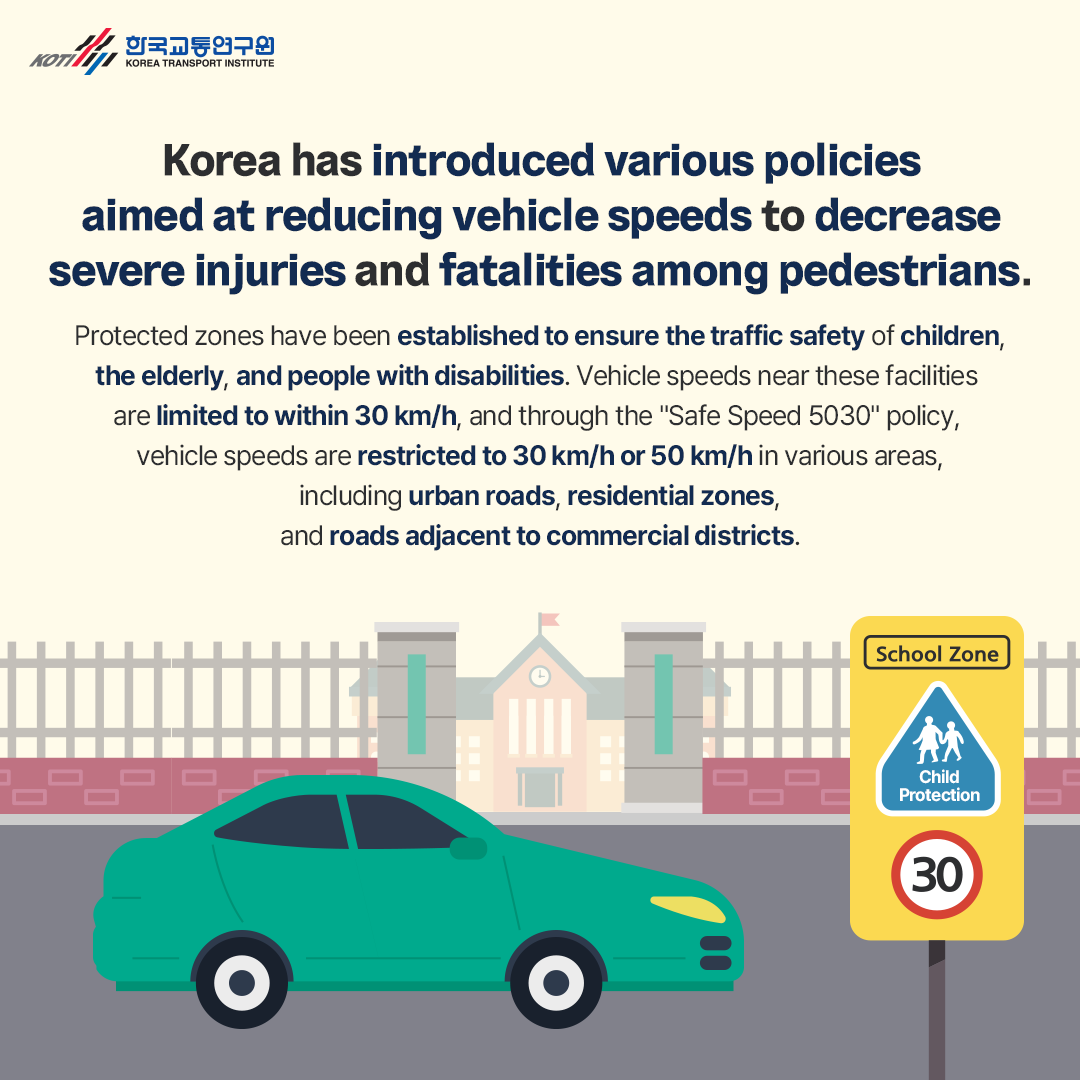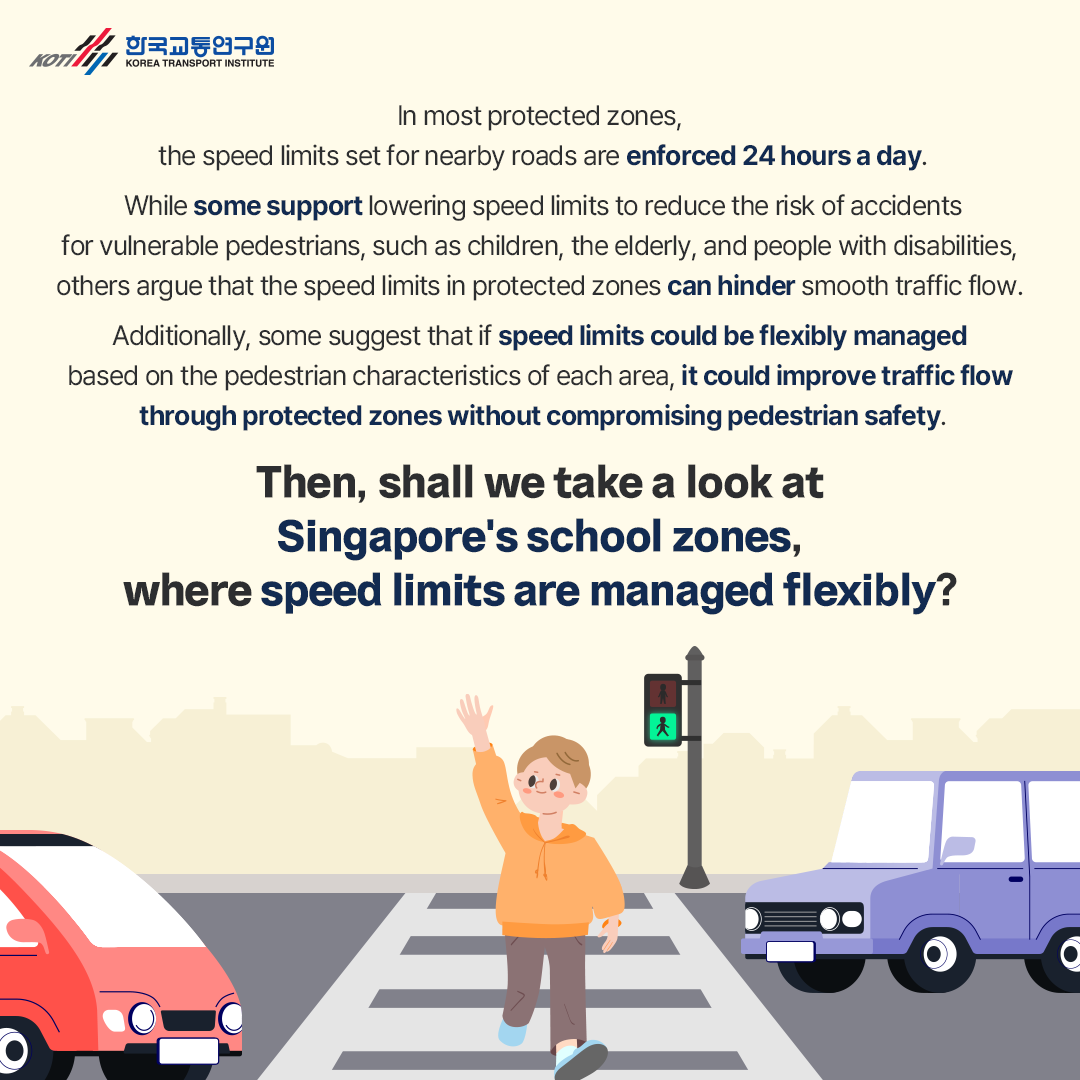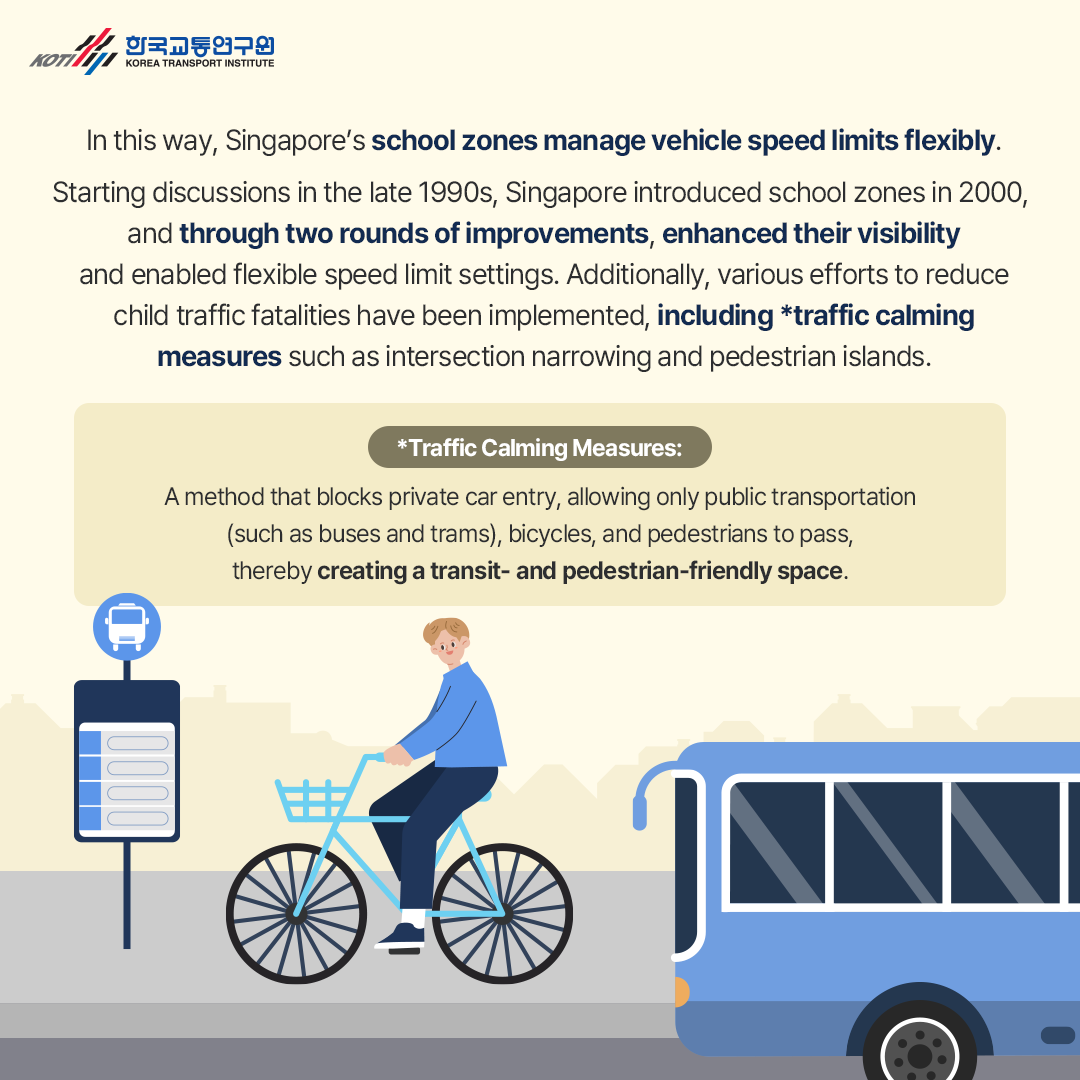Card News

NEWS
KOTI - Korea Transport institute
Feeds and Updates
Flexible Speed Limit Management in School Zones
October 31 2024
-
Flexible Speed Limit Management in School Zones
Korea has introduced various policies aimed at reducing vehicle speeds to decrease severe injuries and fatalities among pedestrians. Protected zones have been established to ensure the traffic safety of children, the elderly, and people with disabilities. Vehicle speeds near these facilities are limited to within 30 km/h, and through the "Safe Speed 5030" policy, vehicle speeds are restricted to 30 km/h or 50 km/h in various areas, including urban roads, residential zones, and roads adjacent to commercial districts.
Child Protection
In most protected zones, the speed limits set for nearby roads are enforced 24 hours a day. While some support lowering speed limits to reduce the risk of accidents for vulnerable pedestrians, such as children, the elderly, and people with disabilities, others argue that the speed limits in protected zones can hinder smooth traffic flow. Additionally, some suggest that if speed limits could be flexibly managed based on the pedestrian characteristics of each area, it could improve traffic flow through protected zones without compromising pedestrian safety.Then, shall we take a look at Singapore's school zones, where speed limits are managed flexibly?
School Zones in Singapore
In Singapore, discussions on child traffic safety began in the late 1990s. In 2000, the Land Transport Authority of Singapore started implementing school zones near primary schools. Initially, school zones were applied to roads near primary schools during peak times when student activity was high (7:00-7:30 a.m., 12:45-1:15 p.m., and 6:00-6:30 p.m. during the school term). Signs were also installed to indicate the start and end of each school zone.
Traffic Signs for School Zones in Singapore (2000)
Start of School Zone Notification / School Zone Active Hours Notification / End of School Zone Notification.
To make school zones more easily recognizable to drivers, Singapore's Land Transport Authority introduced an enhanced school zone system in 2004. The 2004 improvements included flashing lights on signs to indicate when school zones were active. Red asphalt was applied to portions of the road at the start of school zones, with "SLOW" markings added to the surface. The red asphalt was constructed with a textured surface, allowing drivers to feel a vibration as they drove over it.
Traffic Signs for School Zones in Singapore (2004)
Indicator Lights Showing School Zone Activation / Red Asphalt Surface Indicating Start of School Zone.
In 2014, Singapore’s Land Transport Authority implemented a second pilot improvement for 10 school zones, focusing on lowering vehicle speed limits and enhancing the visibility of signs. The 2014 improvements included displaying three types of information on signs indicating the start of school zones.
1. Traffic sign showing children crossing / 2. Sign indicating a 40 km/h speed limit / 3. Two yellow flashing lights that activate when the school zone is in effect
The yellow flashing lights operate during the hours specified in Singapore's Road Traffic Act or when school events are taking place. As of January 2024, the yellow lights indicating the active school zone are in operation from 6:30 to 7:45 a.m., 12:00 to 2:30 p.m., and 6:00 to 7:00 p.m. When the yellow flashing lights are not active, a speed limit of 50 km/h applies. The 2014 improvements were gradually expanded to over 200 school zones in Singapore, and by March 2024, they were implemented in all primary schools. The Singapore Land Transport Authority has maintained a school zone road safety toolkit for over 25 years, including the establishment of school zones, speed limit reductions, road surface improvements, intersection narrowing, and installation of pedestrian islands. Through these measures, child traffic fatalities in Singapore dropped from 173 in 1996 to zero by 2018. In this way, Singapore’s school zones manage vehicle speed limits flexibly.
Starting discussions in the late 1990s, Singapore introduced school zones in 2000, and through two rounds of improvements, enhanced their visibility and enabled flexible speed limit settings. Additionally, various efforts to reduce child traffic fatalities have been implemented, including *traffic calming measures such as intersection narrowing and pedestrian islands.
*Traffic Calming Measures: A method that blocks private car entry, allowing only public transportation (such as buses and trams), bicycles, and pedestrians to pass, thereby creating a transit- and pedestrian-friendly space.
However, in Korea, students often remain at school after regular classes, and there may be numerous pedestrians around schools outside of school hours. Therefore, a school zone management plan tailored to Korea’s specific conditions should be studied. Like Singapore's example, it is necessary to apply flexible speed limits alongside various traffic calming measures to enhance pedestrian safety in protected zones. This approach is expected to play an important role in improving traffic flow through school zones without compromising pedestrian safety.
* This card news was created by partially modifying and supplementing the "KOTI Traffic Accident Zero Brief 2024 Vol.11_No.1."









